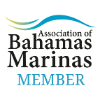The Okeechobee Waterway (OCWW) provides a shortcut from the Atlantic Ocean to the Gulf of Mexico and divides central and south Florida. It starts at the ICW in the mouth of the St. Lucie River at Mile 0 and ends 154 miles later at Mile 0 on the Gulf ICW (GIWW) at San Carlos Bay south of Cape Coral. This efficient route allows boats to pass across the state from the ocean to the Gulf without having to make the long trip down around the Keys and up across Florida Bay.
The OCWW offers a chance to see rural Florida with small towns preserved much as they were early in the last century. Along the waterway ranches and big commercial farms alternate with moss-hung wilderness, while bustling boom towns coexist alongside sleepy villages that have been around since way before Miami.
The Caloosahatchee River was once the only way to get from the Gulf of Mexico to Central Florida via small steamers and freighters. Some still consider the 76.6-mile-long Caloosahatchee to be the most scenic part of the OCWW. For the boater the OCWW and Lake Okeechobee provide a stark transition from the busy coastal cities.
The OCWW is described here according to its three distinct sections:
- From Mile Zero (the intersection of the OCWW and the ICW at St. Lucie Inlet down the South Fork of the St. Lucie River to the St. Lucie Canal to Lake Okeechobee.
- Lake Okeechobee (either the "open-water route" directly across the lake or the "rim route" along the lake's south shore).
- The Caloosahatchee River to the end of the OCWW in San Carlos Bay at Mile 0 of the GIWW heading north.
CAUTION: To provide increased safety to the public, all locks on this route will be closed on the last Thursday of each month between 9:00 a.m. and 10:00 a.m. for monthly safety training for lock operators, maintenance crew and administration. This will allow the morning lock traffic to clear before the closure and prevent delays for the afternoon boating traffic.
For up-to-date lock information, contact the shift operator 7:00 a.m. to 5:00 p.m. at:
St Lucie Lock & Dam (772-287-2665 or 863-662-9148)
Port Mayaca Lock & Dam (561-924-2858 or 863-662-9424)
Julian Keen, Jr. (Moore Haven) Lock & Dam (863-946-0414 or 863-662-9533)
Ortona Lock & Dam (863-675-0616 or 863- 662-9846)
W.P. Franklin Lock & Dam (239-694-5451 or 863-662-9908)
Lake Okeechobee can be likened to a saucer full of water. It is shallow with normal depths from 7 to 11 feet MLW depending on the season and annual rainfall onto the drainage area to the north and the lake itself. The Army Corps of Engineers and the South Florida Water Management District manage the level of the lake.
The depths charted in Lake Okeechobee are based on a datum of 11.50 feet. If skippers know the lake level they can determine the difference between the datum and the current level and modify the charted depths accordingly. Depths in the sections between dams on either side of the lake vary slightly with lake level changes but the differences are seldom enough to affect navigation.
Note that water levels vary dramatically from season to season, month to month, and sometimes even day to day. Rainfall is the driving force behind the water level fluctuations but lake levels can also be affected by strong southerly winds, which will lower the water level. Daily water levels and route depths are available online from the U.S. Army Corps of Engineers. During a drought, lockage may be restricted depending on water supply. You can also call the Army Corps of Engineers in Clewiston (863-983-8101) for the latest updates.
Check during your pre-cruise planning and again at the first lock to make sure the entire OCWW is open before proceeding. Maintenance on the locks is normally conducted each summer and through-passage from the East Coast to the Gulf Coast may not be possible for as long as several months. During such times Lake Okeechobee may be accessible from one side or the other (but not both).
With the exception of a lake crossing in less than perfect weather passage along the OCWW is easy, piloting is simple and navigational aids are adequate for daytime running. Aids to navigation are numbered in several sequences from east to west all the way across. Even-numbered red aids are on the starboard side (as they are southbound along the Atlantic ICW). Conversely, leave red aids to port eastbound on the OCWW as you would when northbound on the ICW. Yellow squares and triangles are shown on daybeacons and buoys.
Nighttime navigation is not recommended as shoals and deadheads (partially submerged objects) are obscured. Fortunately, ample facilities and occasional anchorages make after-dark travel unnecessary.
Currents are not a problem on the OCWW except for the turbulence that occurs when locks are opened. Average tides at the mouth of the St. Lucie River are 1.1 feet, 1.3 feet at Fort Myers and 2.4 feet at Punta Rassa (at the western end of the waterway) near Mile 0 of the GIWW heading north. There is no tide in the lake itself.

Weather
Central Florida weather is generally mild. In winter the prevailing wind on Lake Okeechobee is north to northeast as opposed to summer, when wind is normally east to southeast with very little rain except when cold fronts from the north pass through.
Summer days are calm in the mornings with occasional patchy fog. Winds pick up at about 10:00 a.m. Afternoons often bring showers and thunderstorms, particularly late in the day, so it is a good idea to plan on getting in early. Hurricanes do occur in season–June through November–as well as other times and can affect the lake.
Lake Okeechobee is the second largest freshwater lake located wholly in the continental U.S. (Lake Michigan is the largest) and it can get nasty. You should know the forecast before you leave port. The continuous NOAA marine weather comes from West Palm Beach and Fort Myers on VHF Channel WX-3 and from Belle Glade on WX-2.
OCWW Bridges & Locks
The OCWW has five modern, spacious and well-handled locks and more than 20 bridges ranging from electronic controlled to hand operated. Some of the OCWW bridges operate daily from 6:00 a.m. to 10:00 p.m. and require a minimum of 3 hours notice to open at any other time. Phone numbers are posted on each bridge; calls are best made during normal office hours. You can use adjacent dolphins for tie-ups. Note that tying up to the dolphins can be tricky and the dolphins are there for commercial boats and tugs with barges to use in case of any delays. They always have priority.

Sailboaters can have their mast unstepped at Stuart or wait and have it done at the Indiantown Marina, which is closer to the Florida East Coast Railroad Bridge (also known as Port Mayaca Bridge).
The water level in Lake Okeechobee is higher than anywhere on the Atlantic Ocean or Gulf ICW. Whether you are headed east or west you ascend through the locks to Lake Okeechobee and then descend after you leave. Typically locks operate between 7:00 a.m. and 5:00 p.m. with the last lockage beginning at 4:30 p.m. Note that the lockage schedule varies depending on lake levels. Allow approximately 15 minutes once inside a lock.

The OCWW locks are easier to transit when you are the only boat locking through and the lock attendant will give you the windward dock line first when winds are strong. Gusty winds can set up a surge in the locks so use caution. The attendant also might warn you that you could be locking through with a manatee or an alligator.
When you reach the mooring dolphins and the sign Arrival Point before each lock contact the lockmaster on VHF Channel 13. If you receive no response on the VHF sound two long and two short blasts of your horn.
Give your vessel's name and direction and request lockage. At that time they will inform you of the current lockage status and your estimated wait time. The lockmaster will instruct you "port-to" or "starboard-to" indicating which side of the lock to steer to and how to arrange your fenders. The lockmaster will then indicate for you to enter when the traffic light is green.
Unlike in other locks the lockmasters will hand or drop down to you (depending on the water level) a bow line and a stern line, or the lines may be hanging down from the top of the lock's sidewall in which case you will have to steer to them and pick them up. (Keep a boathook handy.)
The locks of the OCWW are different from all other locks in North America in that they do not use valves to let water in to the lock. Instead, the front gates on the high side of the canal are opened about a foot and the water pours into the lock. In actuality it is not much worse than locks with valves; however, it can be a little disconcerting the first time you experience this.
Two people can safely handle a small or medium-sized boat but an extra pair of hands is always useful on larger boats. Single-handing through the locks is not safe and is strongly discouraged. Remember that the first boat into the lock should be the first boat out of the lock. Don't be too anxious.
Anchoring in approach areas to some of the locks is possible and the lockmasters can provide local knowledge concerning depths and conditions. Reservations are recommended at any marina on the OCWW.













